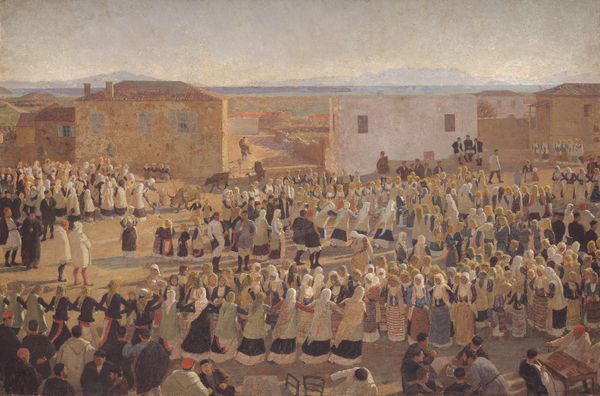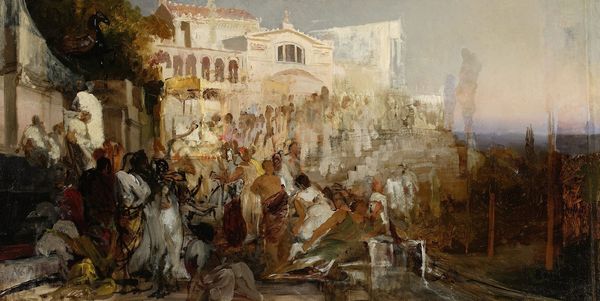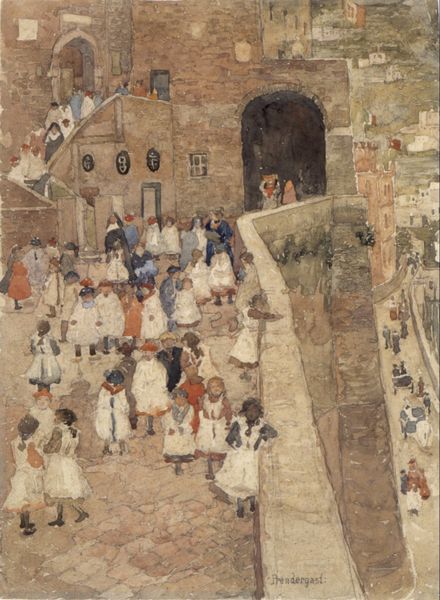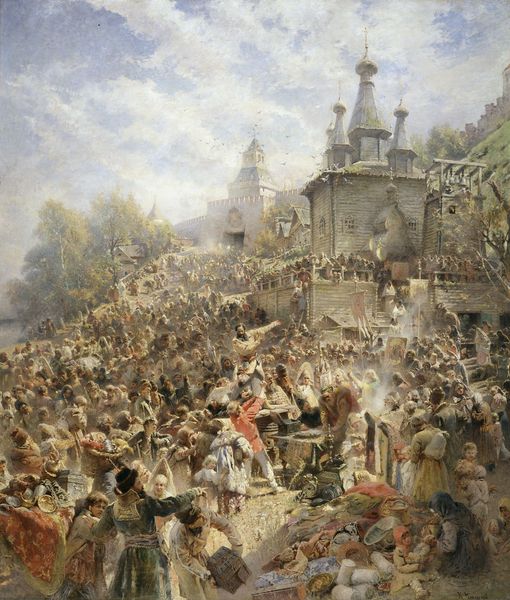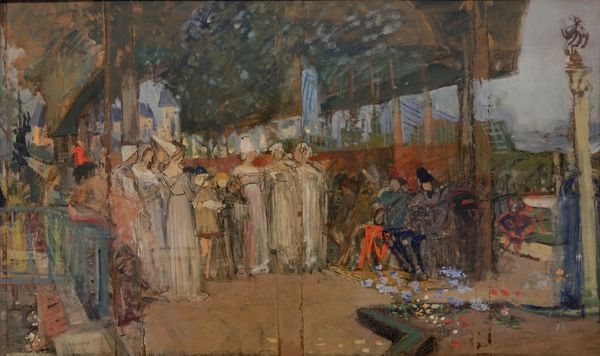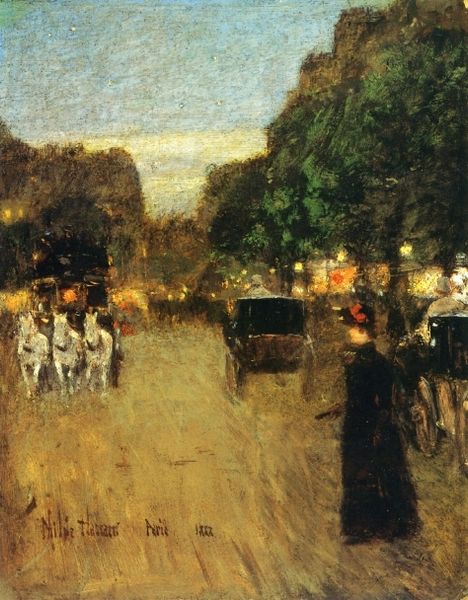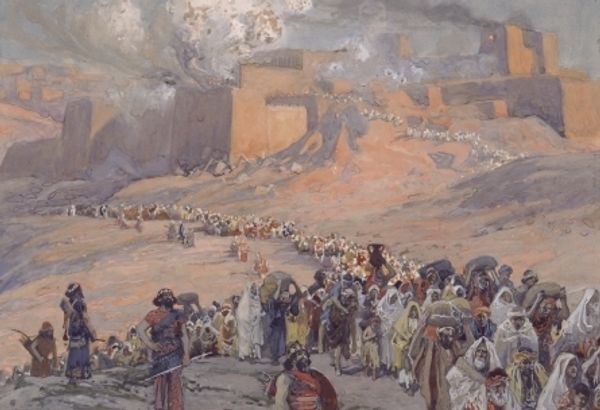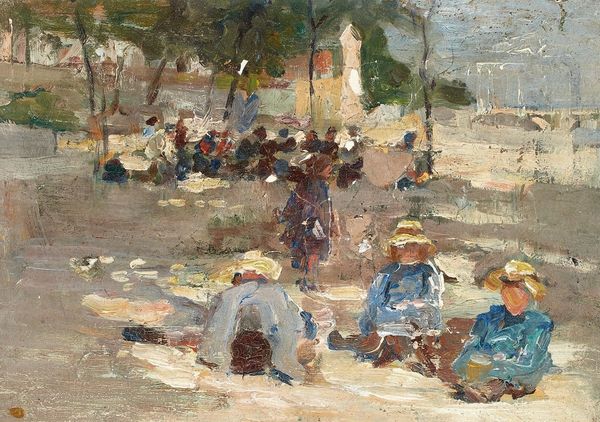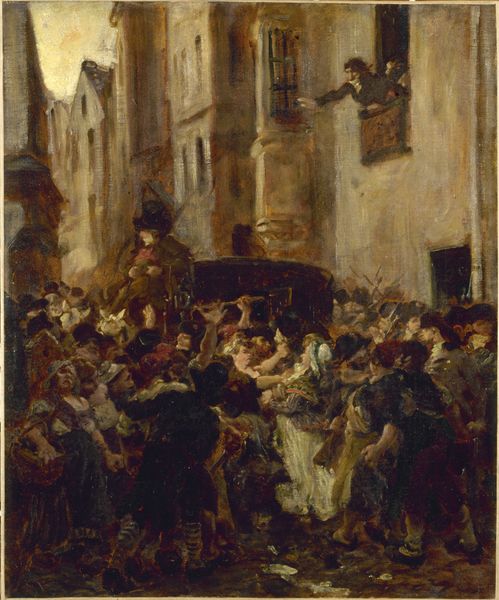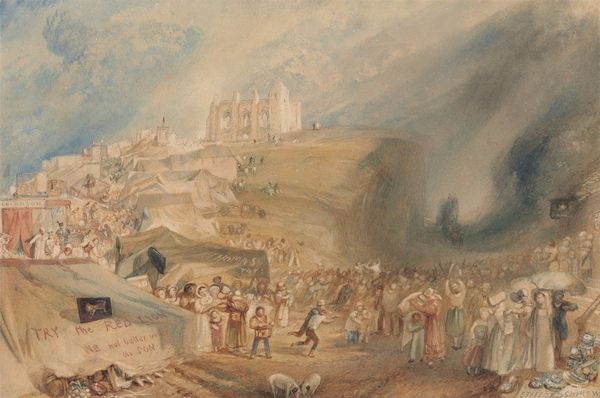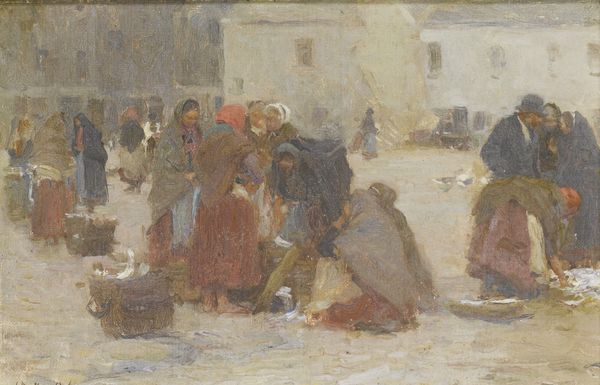
plein-air, oil-paint, impasto
#
impressionism
#
plein-air
#
oil-paint
#
landscape
#
impressionist landscape
#
oil painting
#
impasto
#
group-portraits
#
orientalism
#
genre-painting
Copyright: Public Domain: Artvee
Curator: This is Renoir's "The Mosque," painted in 1881. It's a captivating example of his experimentation with Impressionism during his travels. Editor: It’s overwhelming, almost dizzying. A sea of figures, rendered in such a flurry of brushstrokes. It feels more about the movement and the light than the individuals. Curator: Indeed, observe how Renoir uses impasto to create texture and capture the light reflecting off the white garments of the figures. The materiality of the oil paint itself becomes crucial to depicting this North African scene. What do you see in terms of its formal structure? Editor: The composition is intriguing. The mosque and the hillside serve as backdrops, creating a stage for this bustling crowd. The layers of figures almost seem to merge, challenging the traditional relationship between the subject and setting. It emphasizes a shared, collective experience, perhaps highlighting the dynamics of the scene, even labor, involved in such a gathering. Curator: And that's exactly it! It speaks to orientalism as a Western fascination, portraying a distant, bustling culture in his signature impressionistic style, where the architecture gives way to a dense social portrayal. Note how Renoir deconstructs the expected rigid lines, using rapid, broken brushwork to convey a sense of dynamism. The semiotics of colour too; the restrained palette adds an ethereal and rather muted touch, a departure from some of his bolder pieces. Editor: Considering the social context, how did his contemporary viewers receive Renoir depicting this vibrant scene through the lens of his materiality-driven style? Did they question his interpretations of these different cultures and labour forces? Curator: Reception at the time was mixed, but that's the core appeal, is it not? The interplay between material and composition, light and form, and orientalist perspective is something you could spend a long time analyzing. Editor: Precisely. The interplay between those artistic boundaries encourages conversation around cross-cultural representation through paint. Curator: An enriching work offering lots to discover! Editor: A scene so culturally far removed now also rooted firmly in the history of painting techniques.
Comments
No comments
Be the first to comment and join the conversation on the ultimate creative platform.
